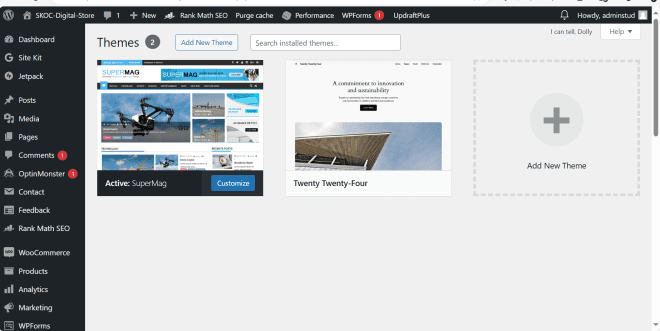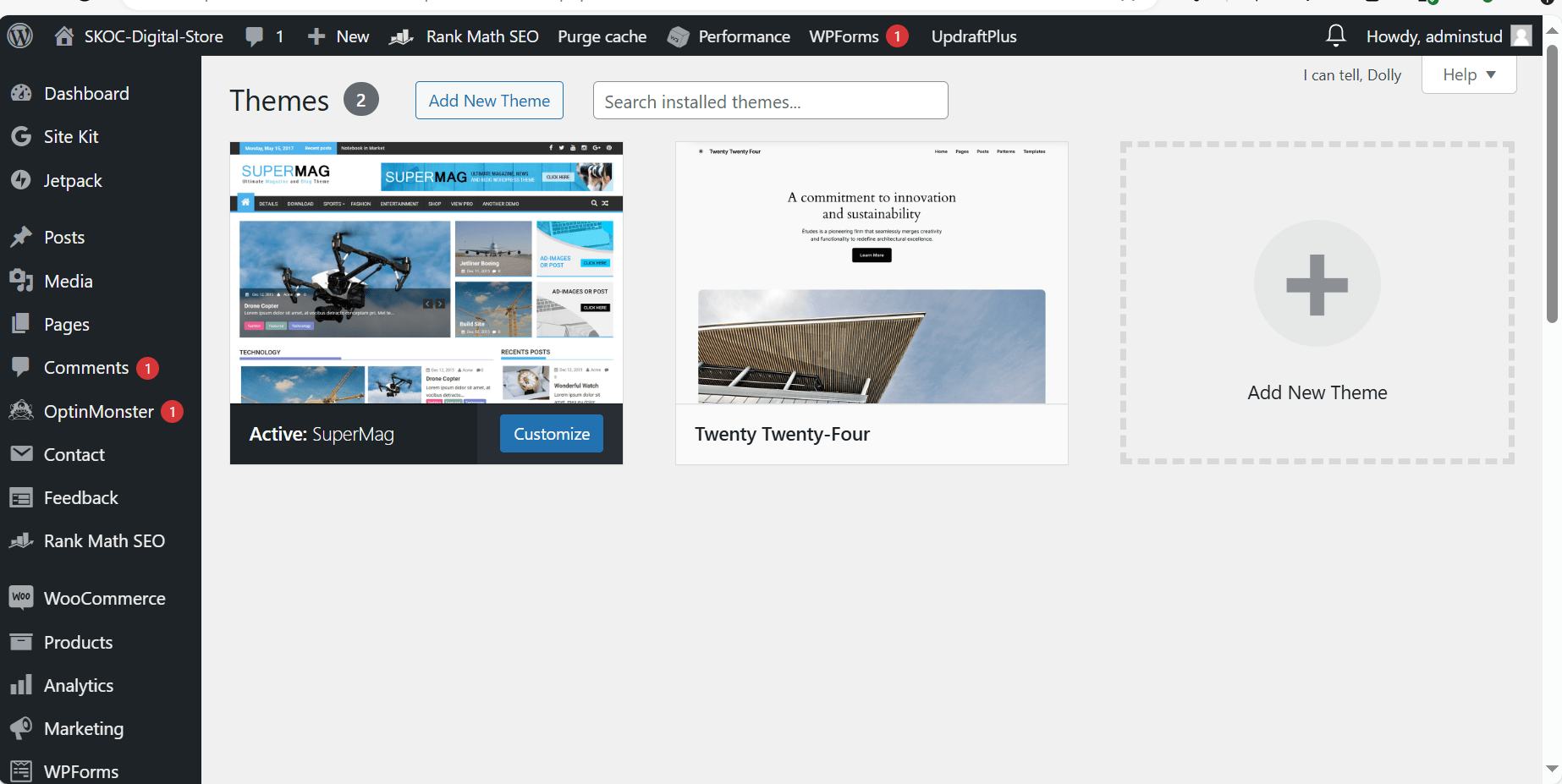WordPress themes are design templates that define the appearance and layout of a WordPress website. They control how the content on your site is displayed, including elements like the header, footer, sidebars, menus, and overall style. Here are some key aspects of WordPress themes:
Key Features of WordPress Themes
-
Design and Layout:
- Themes dictate the visual design of your site, including colors, fonts, and layout. This ensures your site has a cohesive look.
-
Customizable Elements
:
- Many themes come with customization options, allowing you to tweak various elements without needing to code. This can include changing colors, fonts, layouts, and more.
-
Templates
:
- Themes often include multiple page templates for different types of content, such as homepage, blog page, single posts, archives, and contact pages.
-
Responsiveness:
- Modern themes are typically responsive, meaning they adjust to look good on devices of all sizes, including desktops, tablets, and smartphones.
-
Widgets and Sidebars
:
- Themes can support different widget areas and sidebars, where you can add various widgets to enhance functionality, like search bars, recent posts, categories, and more.
-
Theme Options and Customizer:
- Themes usually offer a theme options panel or use the WordPress Customizer, allowing you to make changes to the theme’s settings and see a live preview of those changes.
Types of WordPress Themes

-
Free Themes:
- Available in the WordPress.org theme repository. These themes are free to download and use but may have limited features compared to premium themes.
-
Premium Themes
:
- Sold by third-party theme developers or marketplaces like ThemeForest. These themes often come with more features, premium support, and regular updates.
-
Custom Themes
:
- Custom-built themes designed specifically for a particular website. These are usually created by web developers or agencies to meet specific design and functionality requirements.
-
Framework Themes
:
- Provide a robust foundation for developing custom themes. Examples include Genesis Framework and Divi. They are often used by developers to build child themes.
How to Choose a WordPress Theme
-
Purpose and Design
:
- Select a theme that fits the purpose of your site (e.g., blog, business, e-commerce, portfolio) and matches the aesthetic you want.
-
Features
:
- Ensure the theme offers the features you need, such as customizable headers, multiple layouts, WooCommerce support for e-commerce, etc.
-
Responsiveness:
- Choose a theme that is responsive and looks good on all devices.
-
Speed and Performance
:
- Opt for themes that are well-coded and optimized for performance. This can affect your site’s loading speed and user experience.
-
SEO Friendliness
:
- Look for themes that are optimized for SEO, helping your site rank better in search engine results.
-
Support and Documentation
:
- Premium themes often come with support and documentation. Check if the theme developer offers these resources, especially if you’re using a free theme.
-
Reviews and Ratings
:
- Check user reviews and ratings in the WordPress theme repository or on third-party sites to gauge the quality and reliability of the theme.
Installing and Activating a Theme
- Access Themes:
- Go to the WordPress dashboard, navigate to Appearance > Themes, and click “Add New.”
-
Search or Upload
:
- Search for a theme in the repository or upload a theme if you’ve purchased one from a third-party site.
-
Install and Activate
:
- Click “Install” and then “Activate” to apply the theme to your site.
-
Customize
:
- Use the WordPress Customizer (Appearance > Customize) to make changes and see a live preview.
WordPress themes play a crucial role in defining the look and functionality of your website, and choosing the right theme can significantly impact your site’s success.






